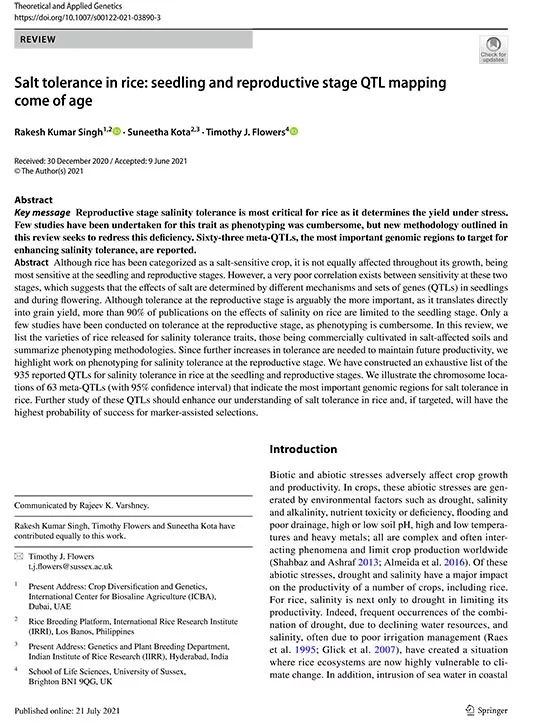Salt tolerance in rice: seedling and reproductive stage QTL mapping come of age
Although rice has been categorized as a salt-sensitive crop, it is not equally affected throughout its growth, being most sensitive at the seedling and reproductive stages. However, a very poor correlation exists between sensitivity at these two stages, which suggests that the effects of salt are determined by different mechanisms and sets of genes (QTLs) in seedlings and during flowering. Although tolerance at the reproductive stage is arguably the more important, as it translates directly into grain yield, more than 90% of publications on the effects of salinity on rice are limited to the seedling stage. Only a few studies have been conducted on tolerance at the reproductive stage, as phenotyping is cumbersome. In this review, we list the varieties of rice released for salinity tolerance traits, those being commercially cultivated in salt-affected soils and summarize phenotyping methodologies. Since further increases in tolerance are needed to maintain future productivity, we highlight work on phenotyping for salinity tolerance at the reproductive stage. We have constructed an exhaustive list of the 935 reported QTLs for salinity tolerance in rice at the seedling and reproductive stages. We illustrate the chromosome locations of 63 meta-QTLs (with 95% confidence interval) that indicate the most important genomic regions for salt tolerance in rice. Further study of these QTLs should enhance our understanding of salt tolerance in rice and, if targeted, will have the highest probability of success for marker-assisted selections.
